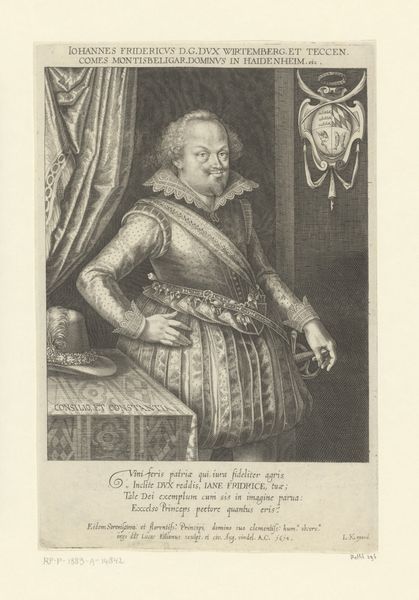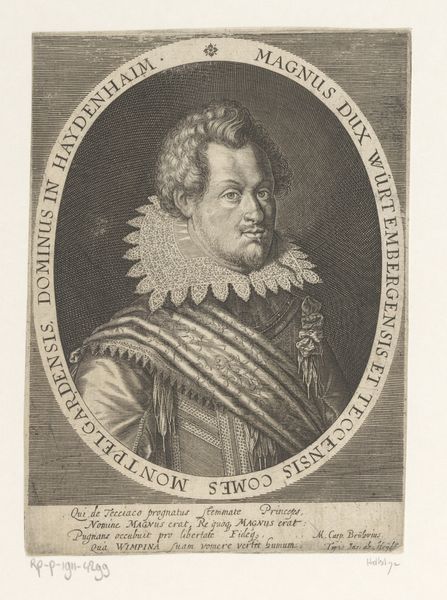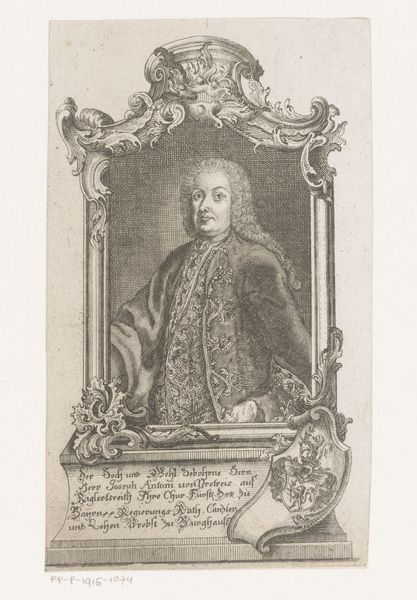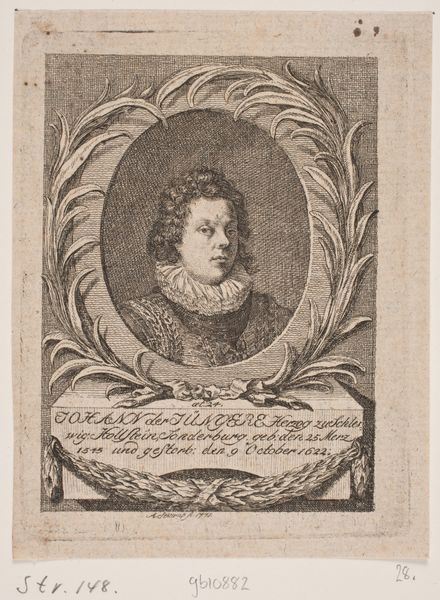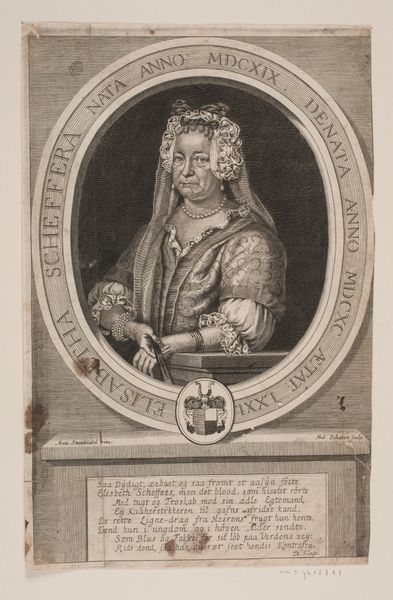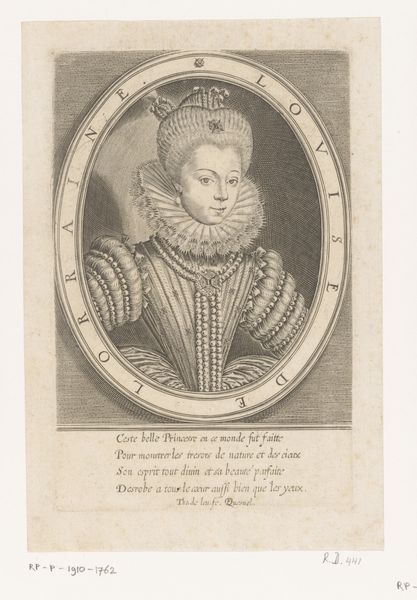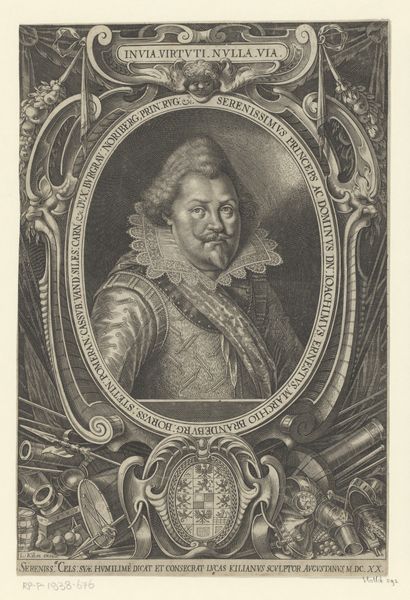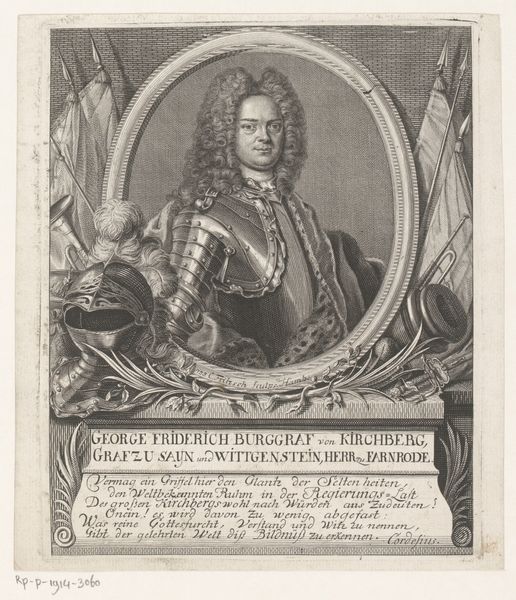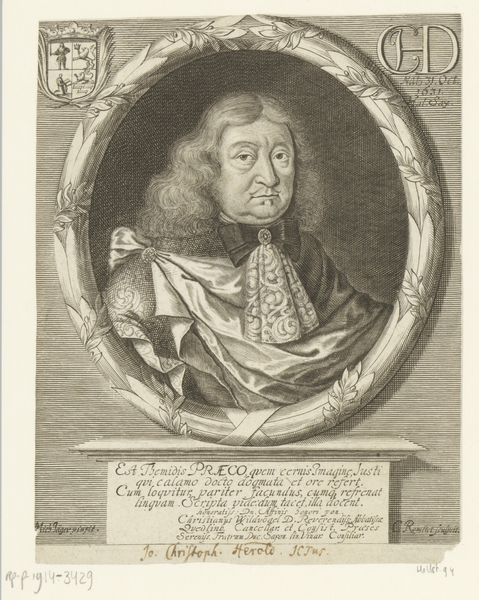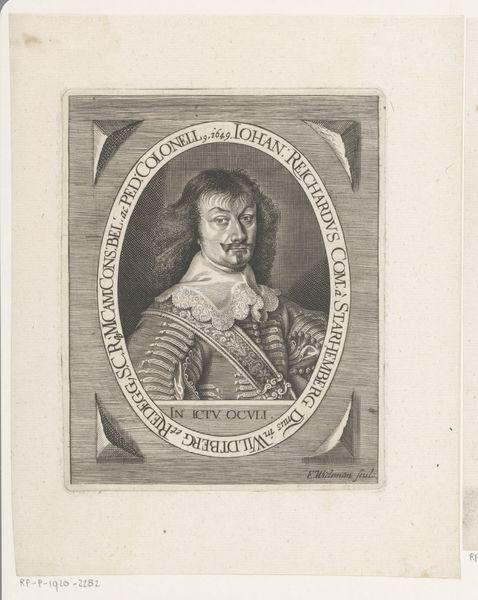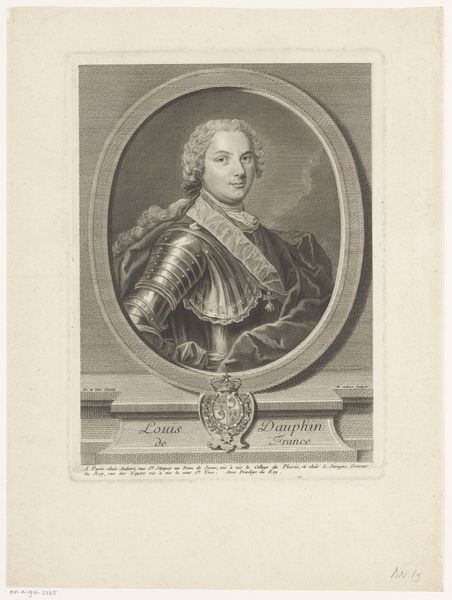
print, metal, paper, engraving
#
portrait
#
baroque
# print
#
metal
#
old engraving style
#
paper
#
line
#
engraving
Dimensions: height 204 mm, width 136 mm
Copyright: Rijks Museum: Open Domain
Curator: Before us we have a print identified as "Portret van Johann Friedrich von Württemberg" made sometime between 1608 and 1637. The artist is Lucas Kilian. Editor: The visual impact is remarkable, particularly the intricate details achieved through engraving. It really speaks to the craftsmanship of the time. The lines almost vibrate with life, a symphony of shadow and light that gives a weighty three-dimensionality despite the flatness of the page. Curator: Considering the era in which Lucas Kilian operated, the work has to be understood within the complex political and social dynamics of the Holy Roman Empire. The detailed rendering of Johann Friedrich von Württemberg’s attire is a demonstration of power and status during the late Renaissance and early Baroque periods. What does his elaborate clothing convey in relation to his status? Editor: The oval composition contains the essence of representation – a deliberate choreography between form and message. See how the lines of the engraving guide our eyes towards the central figure. It's a masterful construction to evoke dignity and authority, isn’t it? Curator: It is worth noting the role of portraiture in shaping dynastic narratives. Kilian’s print undoubtedly played a role in constructing the image of Johann Friedrich within the context of his rule. His depiction advances certain claims about legitimate power through an aesthetic language available to a wide audience through print culture. Editor: The rendering is very evocative in terms of form, but the portrait could be almost any nobleman in the period. Still, you’ve moved my perspective, I see beyond a man of status and notice now a crafted image for social purposes. Curator: Precisely! I see Kilian’s work not just as an image but as an important visual component to Württemberg’s power and persona. I'm interested to examine further into how he may have been influenced by the religious tensions and intellectual debates of the 17th century Editor: Perhaps examining Kilian’s strategic arrangement of lines can lead to greater insights on the aesthetic goals of the period, while your approach may enlighten us about their ideological functions within early modern European society. Fascinating.
Comments
No comments
Be the first to comment and join the conversation on the ultimate creative platform.
